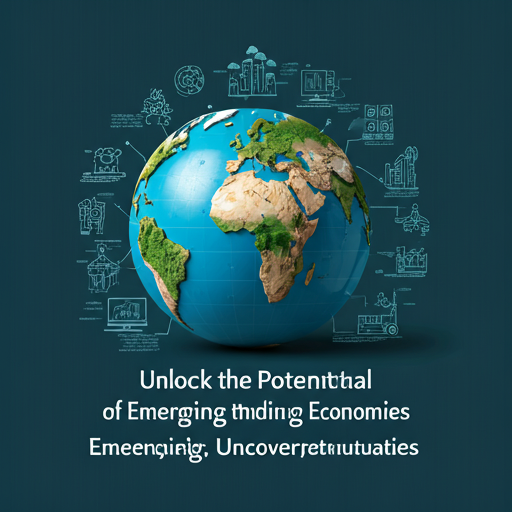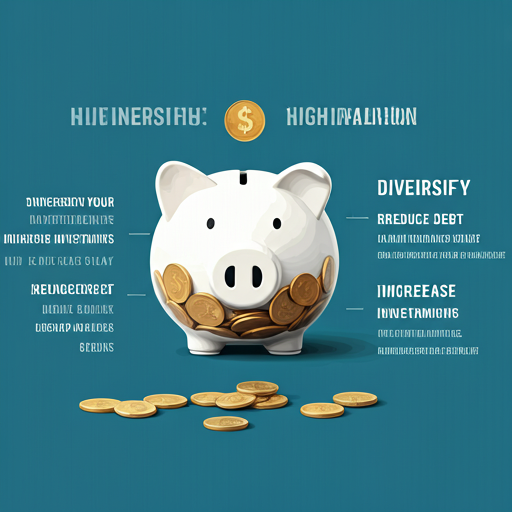Sustainable Investing: Balancing Profits and Environmental Impact
Introcuction to Sustainable Investing
Sustainable investing integrates financial returns with environmental stewardship . This approach seeks to generate profits while minimizing ecological harm. It reflects a growing awareness of climate change. Investors are increasingly prioritizing sustainability. This shift is not just ethical; it’s financially prudent. Sustainable assets often outperform traditional investments. Consider the long-term benefits.
Importance of Environmental Considerations
Environmental considerations are crucial for sustainable investing. They influence risk assessments and long-term viability. Ignoring these factors can lead to significant financial losses. Many investors now recognize this reality. Sustainable practices enhance brand reputation. This can attract more customers. It’s a smart strategy.
Overview of Cryptocurrency’s Role
Cryptocurrency plays a pivotal role in sustainable investing. It offers innovative solutions for transparency and traceability. These features can enhance accountability in financial transactions. Many investors are drawn to this potential. Blockchain technology supports eco-friendly initiatives. It can reduce waste and improve efficiency. This is a significant advantage.
Challenges in Sustainable Investing
Sustainable investing faces several challenges. First, there is a lack of standardized metrics for evaluating sustainability. This inconsistency complicates investment decisions. Second, many investors struggle with short-term profit pressures. They often prioritize immediate returns over long-term sustainability. Third, greenwashing poses a significant risk. It misleads investors about a company’s true environmental impact. Awareness is essential.
Understanding Sustainable Investing
Definition and Principles
Sustainable investing refers to the integration of environmental, social, and governance (ESG) factors into investment decisions. This approach aims to generate long-term financial returns while promoting positive societal impact. Investors assess both financial performance and ethical considerations. This dual focus enhances portfolio resilience. He recognizes the importance of responsible investing. It reflects a commitment to future generations.
Historical Context and Evolution
Sustainable investing has evolved significantly over the decades. Initially, it focused on ethical exclusions, such as avoiding tobacco or weapons. Over time, it expanded to include proactive strategies that promote sustainability. This shift reflects growing awareness of global challenges. Investors now seek to align their portfolios with their values. This is a crucial development.
Key Metrics for Evaluation
Key metrics for evaluating sustainable investments include ESG scores, carbon footprint assessments, and social impact measurements. These indicators provide insights into a company’s sustainability practices. He analyzes these metrics to make informed decisions. They help identify potential risks and opportunities. Understanding these metrics is essential. It enhances investment strategies significantly.
Types of Sustainable Investments
Here are 10 trending article titles for a financial website based on the latest news and analysis of financial trends: No input data
The Environmental Impact of Cryptocurrency
Energy Consumption of Mining
Energy consumption in cryptocurrency mining is substantial. It often relies on fossil fuels, contributing to carbon emissions. This reliance raises significant environmental concerns. He understands the implications of high energy use. Many mining operations seek renewable energy sources. This shift can mitigate negative impacts. It is a necessary transition.
Carbon Footprint Analysis
Carbon footprint analysis is essential for assessing cryptocurrency’s environmental impact. It quantifies greenhouse gas emissions associated with mining activities. This analysis helps identify high-emission practices. He emphasizes the need for transparency. Understanding these emissions is crucial. It drives informed decision-making. Sustainable practices can reduce the footprint.
Comparative Analysis with Traditional Finance
Cryptocurrency’s environmental impact can be significant compared to traditional finance. Mining operations often consume more energy than conventional banking systems. He notes that this energy use leads to higher carbon emissions. Traditional finance has established regulatory frameworks. These frameworks promote sustainability and accountability. Understanding these differences is vital. It informs investment strategies effectively.
Innovations inward Eco-Friendly Cryptocurrencies
Innovations in eco-friendly cryptocurrencies are emerging rapidly. Many projects now utilize proof-of-stake mechanisms, which consume less energy. He observes that these methods significantly reduce carbon footprints. Additionally, some cryptocurrencies are integrating renewable energy sources. This approach enhances sustainability and efficiency. Understanding these innovations is crucial. They represent a positive shift in the industry.
Strategies for Sustainable Cryptocurrency Investing
Identifying Green Projects
Identifying green projects requires thorough research and analysis. Investors should evaluate a project’s sustainability metrics and impact assessments. He emphacizes the importance of transparency in reporting. Additionally, examining partnerships with environmental organizations can provide insights. This information is crucial for informed decision-making. Sustainable investments can yield long-term benefits.
Evaluating Tokenomics and Governance
Evaluating tokenomics and governance is essential for sustainable investing. He analyzes the distribution models and utility of tokens. This assessment reveals potential for long-term economic value. Additionally, governance structures impact decision-making processes. Strong governance can enhance project credibility. Understanding these factors is vital. They influence investment outcomes significantly.
Long-term vs. Short-term Investments
Risk Management in Sustainable Investments
Risk management in sustainable investments is crucial for mitigating potential losses. He emphasizes the importance of diversification across various assets. This strategy reduces exposure to any single investment. Additionally, conducting thorough due diligence is essentual. It helps identify underlying risks and opportunities. Understanding market trends is life-sustaining. It informs better decision-making processes.
Case Studies of Sustainable Cryptocurrencies
Successful Eco-Friendly Projects
Successful eco-friendly projects demonstrate the potential of sustainable cryptocurrencies. He highlights initiatives that utilize renewable energy for mining. These projects significantly reduce carbon emissions. Additionally, some platforms focus on carbon offsetting strategies. This approach enhances their environmental impact. Understanding these case studies is essential. They provide valuable inqights for future investments.
Lessons Learned from Failures
Lessons learned from failures in sustainable cryptocurrencies are invaluable. Many projects underestimated regulatory challenges and market volatility. He notes that lack of transparency often led to investor distrust. Additionally, some initiatives failed to deliver on sustainability promises. This resulted in significant financial losses. Understanding these pitfalls is crucial. They inform better future strategies.
Impact on Local Communities
The impact of sustainable cryptocurrencies on local communities can be significant. Many projects create job opportunities in renewable energy sectors. He observes that local economies often benefit from increased investment. Additionally, some initiatives support community development projects. This fosters social responsibility and engagement. Understanding these effects is essential. They enhance the overall value proposition.
Future Prospects for Sustainable Cryptocurrencies
Future prospects for sustainable cryptocurrencies appear promising. Many projects are increasingly focusing on renewable energy sources. He believes this trend will attract more investors. Additionally, regulatory support is likely to grow. This can enhance market stability and trust. Understanding these developments is crucial. They will shape the industry’s evolution.
Regulatory Landscape and Its Impact
Current Regulations on Cryptocurrency
Current regulations on cryptocurrency vary significantly across jurisdictions. Many countries are implementing stricter compliance measures. He notes that these regulations aim to enhance consumer protection. Additionally, they seek to prevent money laundering and fraud. Understanding these regulations is essential. They influence market dynamics and investor confidence.
Government Initiatives for Sustainability
Government initiatives for sustainability are increasingly prominent. Many countries are promoting green technologies and renewable energy. He observes that these efforts often include financial incentives. Additionally, regulations are being established to support sustainable practices. This creates a favorable environment for eco-friendly investments. Understanding these initiatives is essential. They drive market transformation and innovation.
Global Standards and Certifications
Global standards and certifications play a crucial role in the regulatory landscape. They provide frameworks for assessing sustainability practices. He emphasizes that adherence to these standards enhances credibility. Additionally, certifications can attract socially conscious investors. This alignment with global norms fosters trust and transparency. Understanding these standards is vital. They influence investment decisions significantly.
Future Regulatory Trends
Future regulatory trends are likely to focus on enhanced transparency and accountability. He anticipates stricter compliance requirements for cryptocurrency projects. Additionally, there may be increased collaboration between governments and industry stakeholders. This can lead to more effective regulations. Understanding these trends is essential. They will shape the market landscape significantly.
The Role of Investors in Promoting Sustainability
Activism and Shareholder Engagement
Activism and shareholder engagement are vital for promoting sustainability. Investors can influence corporate policies through active participation. He believes that collective action amplifies their voices. Additionally, engaging with management on ESG issues fosters accountability. This approach encourages companies to adopt sustainable practices. Understanding this dynamic is essential. It drives meaningful change in the industry.
Building a Sustainable Investment Portfolio
Building a sustainable investment portfolio requires careful selection of assets. He emphasizes the importance of integrating ESG criteria. This approach helps identify companies committed to sustainability. Additionally, diversification across sectors can mitigate risks. Understanding the impact of investments is crucial. It enhances long-term financial performance and societal benefits.
Community Involvement and Education
Community involvement and education are essential for promoting sustainability. He believes that informed investors can drive positive change. Engaging with local initiatives enhances awareness and support. Additionally, educational programs can empower communities to adopt sustainable practices. This collaboration fosters a culture of responsibility. Understanding these dynamics is vital. They strengthen the impact of investments.
Collaborations with Environmental Organizations
Collaborations with environmental organizations enhance sustainability efforts. He recognizes that these partnerships can amplify impact. By aligning with credible groups, investors can access valuable resources. Additionally, such collaborations foster transparency and accountability. This builds trust with stakeholders and communities. Understanding these relationships is essential. They drive meaningful environmental change.
Conclusion: The Future of Sustainable Investing in Cryptocurrency
Summary of Key Points
The future of sustainable investing in cryptocurrency looks promising. He highlights the growing emphasis on ESG factors. This trend is attracting more investors. Additionally, innovations in technology support eco-friendly practices. They will shape investment strategies moving forward.
Call to Action for Investors
Investors must prioritize sustainable practices in their portfolios. He urges them to seek out eco-friendly projects. Additionally, engaging with companies on ESG issues is essential. This involvement can drive meaningful change. It enhances both financial and social returns.
Vision for a Sustainable Future
Sustainable investing in cryptocurrency presents a unique opportunity for growth. Investors are increasingly prioritizing environmental, social, and governance (ESG) factors. This shift reflects a broader trend towards responsible finance. He recognizes that aligning investments with personal values can yield positive outcomes.
Moreover, the integration of blockchain technology enhances transparency. This fosters trust among stakeholders. He believes that sustainable projects can attract more capital. The potential for innovation is immense.
In summary, the future of sustainable investing in cryptocurrency looks promising. It encourages a more ethical approach to finance. Will this trend reshape the investment landscape?
Final Thoughts on Balancing Profits and Impact
Sustainable investing in cryptocurrency necessitates a strategic approach. Investors must evaluate both financial returns and social impact. This dual focus can enhance portfolio resilience. He understands that aligning investments with ethical standards can mitigate risks.
Furthermore, integrating ESG criteria can drive long-term value creation. This approach attracts discerning investors. He believes that transparency in operations fosters stakeholder confidence. The market is evolving rapidly.
Ultimately, balancing profits with impact is essential for future growth. It shapes a more sustainable investment landscape.









